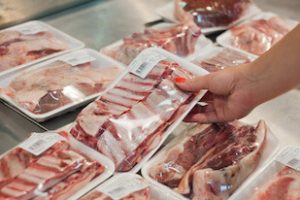 Did you know that the Food and Agricultural Organization of the United Nations (FAO), celebrates its founding each year on October 16 with World Food Day? You can explore their theme and commitment to ending hunger by 2030 here. As part of their, “Ten Facts You Need to Know about Hunger,” perhaps you may find it interesting that, “The world will need to grow 60 percent more food by 2050 to feed the growing population.”
Did you know that the Food and Agricultural Organization of the United Nations (FAO), celebrates its founding each year on October 16 with World Food Day? You can explore their theme and commitment to ending hunger by 2030 here. As part of their, “Ten Facts You Need to Know about Hunger,” perhaps you may find it interesting that, “The world will need to grow 60 percent more food by 2050 to feed the growing population.”
To meet these goals, and in addition to the investments the FAO calls for, today’s researchers are tasked with analyzing food samples for integrity, authenticity, and safety. They must do it fast and with the utmost accuracy. It’s not uncommon, for example, to hear about the overzealous application of pesticides to crops. Alternatively, the injection of antibiotics into animals. In China, Melamine was found in milk. Horse meat found its way into ground beef. The list goes on. As scientists, not only do we wish for hunger to end, but to ensure food supplies are safe.
Therefore, to honor the FAOs commitment to ending hunger and promoting its safety we give you a recap of past food blogs. Hunger isn’t just a government problem, it’s a human problem, and after all, scientists are human.
- SCIEX Helps Set Food Standards in China: Along with food safety revisions, the 2015 US Foreign Supplier Verification Program (FSVP) means companies must be able to stand by their imports to avoid issues that have occurred in the past, such as melamine in milk and horse meat found in advertised beef products. Therefore, if we can make affordable and compact mass spec instruments more accessible to Chinese inspectors, it could lead to greater compliance with the FSVP. Certainly, high-performance testing is just one of the factors to improve food quality, but it is a step in the right direction especially given the Chinese Food and Drug Administration (CFDA) had half a million complaints last year.
- The rise of the Super Bugs: Antibiotics have long been added to livestock feed to treat sick animals, prevent them from getting sick in the first place, and boost growth. However, over the past decade scientists are discovering the rise of “superbugs,” those that are increasingly immune to existing antibiotics, more so the adverse health effects it can pose to humans.
- Guardians of Antibiotics: Powerful detection tools are crucial to fighting the health battles associated with the use of antibiotics in foods. Labs require rapid and selective screening methods, which not only detect varieties of antibiotic residues but also a broad range of levels in food and animals.
- Looking to Quantify and Identify Pesticides in your Food Samples? Farmers aim to apply an appropriate level of pesticides with acceptable residuals and do so discriminately as government and manufacturers of pesticides educate them as to how to minimize their use. However, “Sometimes farmers add too much, which does leave a residue,” said Phil Taylor Global Marketing Manager, Food, Environmental, and Forensics. “Therefore, we test for remnants even though during harvest, farmers wash the fruit and vegetables. Download the tech note to see full LC-MS/MS method details utilizing the Ultra LC 100 and the QTRAP 4500 System using the Scheduled MRM algorithm in combination with fast polarity switching, and acquisition of MS/MS spectra for compound identification.
- From Extraction to Clean up Measuring Mycotoxins from Cornmeal Products: The National Study for Biotechnology Report indicates mycotoxins pose a significant risk to animal health as they can receive a lower quality of feed sources and ongoing surveillance is needed1. In another report, it is estimated approximately 25% of the world’s fodder crops are polluted with mycotoxins2 where one-third is used for livestock feed, 40% ethanol, and the remaining food and beverage3.
Want to learn more about food safety? Visit our application page >
- https://www.ncbi.nlm.nih.gov/pmc/articles/PMC4773798/
- https://www.omicsonline.org/open-access/mycotoxin-strategies-impact-on-global-health-and-wealth-2153-2435-1000498.php?aid=78613
- http://www.nytimes.com/2012/07/31/opinion/corn-for-food-not-fuel.html






 Contact Support
Contact Support
0 Comments